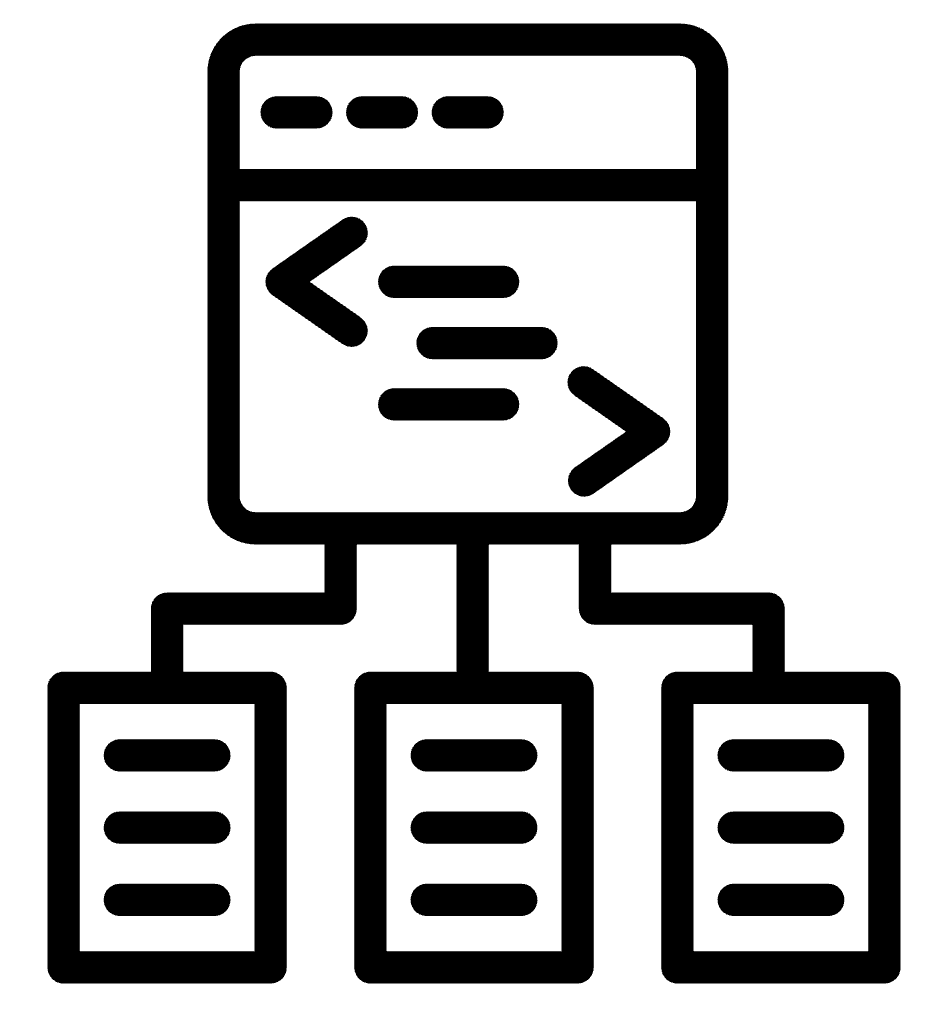The Ultimate Tutorial for Keeping Your Workflows and Automation Organized
Let’s be honest: the very reason people fall in love with automation is because it promises a world where repetitive tasks are done by bots while you sip your coffee or focus on more strategic work. But after a while, what started as a few neat automations can quickly turn into a tangled web of triggers, actions, and zaps (or whichever tool you’re using). Before you know it, you’re in a pickle—tasks are overlapping, triggers are firing at the wrong times, and finding what went wrong feels like trying to untangle a box full of old earbuds.
If that sounds familiar, don’t panic. This isn’t some scary “automation monsters” tale. In fact, it’s totally normal. Many businesses, from startups to more established companies, experience what we might call “automation sprawl.” The good news is that it’s fixable. What you need is a solid system for organizing your workflows. Think of it like digital housekeeping. Just as you wouldn’t leave random papers strewn across your office desk, you shouldn’t leave your workflows scattered and unlabeled. With a bit of structure, you can bring order to the chaos.
This guide is the ultimate tutorial for anyone—whether you’re just dipping your toes into automation or you've already built a complex stack of automated processes. We’ll break down how to keep workflows organized in a friendly, down-to-earth way. No complicated tech jargon, no unnecessary theory—just actionable advice you can use right now.
Table of Contents
- Introduction
- Naming Conventions
Start With a Bird’s-Eye View
Before you start diving into your tools and renaming things, you need to know what you’re dealing with. This means taking a step back and mapping out all the processes you have in place. Treat it like spring cleaning for your digital workspace. Grab a notebook or open a blank doc, and list out:
- All the tools and platforms you use: CRMs, email marketing software, project management boards, payment processors—everything.
- Every recurring task you’ve automated or want to automate: Sending follow-up emails, updating lead statuses, generating reports, pinging your team in Slack—the whole shebang.
By seeing all your automated tasks in one place, you’re better positioned to spot redundancies and opportunities to streamline. Experts in organization, like Marie Kondo, always say to start by gathering everything you own before deciding what to do with it. Consider this your digital KonMari moment: lay it all out to see what sparks efficiency and what’s just clutter.
Naming Conventions
Once you’ve got your big-picture view, it’s time to put things in order.
Start by creating a clear naming convention for your workflows. Instead of calling something “Automation #1” (which tells you nothing) try something descriptive like “NewLead_EnterCRM_AddTag” or “WebformSignup_ToNewsletter_EmailSequence.”
When you see a name, you should instantly know what it does and which process it relates to.
- Be Descriptive: Use short, clear words that tell you what the workflow does.
- Be Consistent: If you use underscores to separate words, use them everywhere. If you start with the main platform first (e.g., “HubSpot_NewDeal_Notification”), then do that for all similar workflows.
- Use Categories or Prefixes: If you have workflows related to lead management, start them all with “Lead_.” If you have tasks related to billing, start them with “Billing_.” It’s like having labeled folders in your filing cabinet.
Think about well-organized kitchens—spices in labeled jars, utensils in specific drawers. The same principle applies here. A neat, consistent naming system makes it much easier to find what you need and figure out what’s going on when something breaks.
How to Name Your Workflows
1. Choose Descriptive Words
Don’t settle for “Workflow1” or “ProcessTest.” Instead, use names that help you understand what the workflow does at a glance. For example:
- “NewLead_EnterCRM_AddTag”
- “WebformSignup_ToNewsletter_EmailSequence”
When you read these names, you know exactly what is happening without having to open the workflow and inspect it.
2. Stay Consistent
Pick a simple pattern or format and use it for every workflow. For instance:
- Always use underscores to separate words.
- Always include the main platform or tool first, followed by what the workflow does.
An example of a consistent pattern might be:Platform_Task_Action
such as HubSpot_NewDeal_Notification or Mailchimp_SignupList_AutoResponse.
When every workflow follows the same pattern, it’s easier to quickly understand them, and new team members will learn the system faster.
3. Use Categories or Prefixes
Categories or prefixes act like labels on folders. If all your lead-related workflows start with “Lead_,” you’ll see at a glance which workflows handle leads. For billing, use “Billing_,” and so on. This way, you can group similar processes and spot them easily.
Examples:
Lead_WebForm_ToCRMBilling_Invoice_Notification
If you manage multiple projects or products, consider adding that information, too. For example:
ProductA_Lead_WebForm_ToCRMProductB_Lead_WebForm_ToCRM
This helps everyone navigate a more complex setup.
Common Mistakes to Avoid
- Being Too Vague: Don’t name something “Thing1” or “GeneralProcess.” It doesn’t help anyone.
- Overloading Your Names: Don’t go overboard. Keep the names short, clear, and to the point.
- Ignoring Your Own Rules: Once you pick a system, stick to it. Consistency is what makes the system valuable.
Examples to Get You Started
- Lead Generation:
Lead_WebForm_ToCRM_AddTag - Onboarding:
Onboarding_NewCustomer_WelcomeEmails - Billing:
Billing_InvoiceReminder_Email - Platform Specific:
HubSpot_DealCreation_NotifyTeam
Document Your Processes
No one loves documentation, but it’s the unsung hero of well-organized workflows. You don’t have to write a novel—just a simple Google Doc or internal wiki page that lists each workflow, what triggers it, what it does, and any related dependencies. Bonus points if you add screenshots or flowcharts.
If a team member joins or you simply forget what a particular workflow does six months from now, you’ll have a cheat sheet. Also, if something goes wrong, your documentation is the first place you (or a colleague) can look to troubleshoot. Think of it like those manuals that come with a new appliance. You might not read them front-to-back now, but when something starts beeping at 2 a.m., you’ll be glad to have it.
Start Small and Build Gradually
It’s tempting to try to automate everything at once, especially when you see the possibilities. But chaos often comes from over-automation. The best approach: start small. Pick your most repetitive and time-consuming task—maybe it’s sending a follow-up email to new leads. Automate that first. Test it out, make sure it’s stable, and then move on to the next workflow.
When you add new automations gradually, you’ll have time to refine each one and ensure it fits neatly into your existing system. It’s like adding pieces to a puzzle rather than dumping the whole box out and trying to assemble it all at once. This step-by-step approach is championed by many productivity experts. David Allen, known for his “Getting Things Done” method, recommends breaking big projects into small, manageable chunks. The same concept applies to automation.
Test, Test, and Test Again
Before you set any automation free in the wild, test it thoroughly. Run sample data through it. Check that all the triggers, actions, and conditions behave as expected. Is your CRM actually getting updated? Is your team receiving the notifications?
Yes, this step can feel tedious, but it’s way better than discovering errors after the workflow goes live—especially if those errors could mean missed leads, duplicate emails to clients, or confusion in your database.
When something does go wrong, treat it as a learning opportunity. Adjust, fix, and retest until it’s working smoothly. Being diligent upfront saves you time and headaches down the road.
Set a Maintenance Routine
Workflows are not “set and forget.” They’re more like living creatures that need check-ups. As your business evolves, your automations should too. Maybe your new lead process changes. Maybe you switch email providers. Perhaps you add a new product line and need new tags or segments.
Schedule a monthly or quarterly review of your automations. During this audit, look for workflows that are no longer needed or could be improved. Clean up old naming conventions that no longer make sense. Archive or delete workflows that are obsolete. Keep a changelog of what you’ve updated, so if something breaks afterward, you can quickly see what changed.
Think of this like changing the oil in your car. It’s a small, regular effort that keeps the engine running smoothly and prevents breakdowns.
Control Permissions and Access
In many growing businesses, multiple people might have access to automation tools. That’s fine—collaboration is great. But too many cooks in the kitchen can spoil the broth if there’s no structure. Make sure you set clear permissions so only the right people can edit or create workflows.
If you have a designated “automation manager” or an operations person who handles these tasks, all the better. The point is: you don’t want a well-meaning team member creating a rogue workflow that disrupts your entire system. Keep an eye on who can do what, and you’ll maintain order much more easily.
Stay Organized With a Central Hub
If you’re working across multiple platforms—say you’re using Zapier to connect your CRM to your email tool, and another tool to handle billing—consider creating a central hub or a dashboard. Some project management tools let you embed links or create resource pages that list all your workflows. Even a shared Google Sheet can do the trick, with columns for workflow names, triggers, and links to their documentation.
This central hub becomes your “mission control.” Anyone who needs to understand how things flow can start here instead of searching through multiple logins and platforms. The simpler and more visual, the better.
Think Like a Minimalist Organizer
If you’ve ever watched an organization expert revamp a cluttered home, you know the drill: they simplify, categorize, and only keep what’s useful. Adopting a minimalist mindset for your automations can help. Whenever you’re tempted to add another fancy sequence, ask yourself:
- Does this solve a real problem, or just add complexity?
- Is there a simpler way to achieve the same goal?
- Am I duplicating something that already exists?
Just because you can automate something doesn’t mean you should. Sometimes, a two-step workflow works better than a ten-step masterpiece. The simpler it is, the easier it will be to manage and maintain over time.
Learn From the Pros
Professionals in operations and project management often rely on a few tried-and-true principles that can apply to automation:
- The "Inbox Zero" Mentality: Treat your automation platform like an inbox. Keep it clean. If you see unnecessary workflows, remove them. If something is unclear, rename it or document it.
- The “One Source of Truth” Principle: Have one main place where you store essential process documentation. Don’t scatter critical info across random tools.
- Continuous Improvement: Borrow from manufacturing’s “Kaizen” philosophy—make small, continuous improvements rather than big, disruptive changes.
These timeless strategies—applied by everyone from high-level execs to expert professional organizers—will serve you well.
Automation Frameworks
Below are a few additional organizational frameworks and methods you could adapt to your automation workflows. Each one comes from different disciplines—some from project management, others from process improvement—but all can help bring clarity and order to your automation strategy.
1. The GTD (Getting Things Done) Method by David Allen
David Allen’s GTD system focuses on capturing every “to-do” and placing it into a trusted system, ensuring nothing slips through the cracks. Here’s how you might apply GTD principles to your automation:
- Capture: Treat each automation opportunity like an “inbox item.” When you identify something that can be automated—like sending a follow-up email to a client—add it to a master list.
- Clarify: Determine what the automation really does. Is it a one-step trigger-action workflow or a multi-step sequence requiring specific conditions?
- Organize: Sort your automation ideas into categories (e.g., lead nurturing, billing, reporting) to make it easy to find what you need.
- Reflect: Regularly review your automations to ensure they’re still relevant and working as intended, adjusting as you go.
- Engage: Turn your clarified, organized lists into actual workflows, then let them run. Check in occasionally to keep things current.
By mirroring GTD’s capture-clarify-organize approach, you ensure that each automation is created deliberately, with a clear purpose and a place in your overall system.
2. The 5S Method (Sort, Set in Order, Shine, Standardize, Sustain) from Lean
Originally from manufacturing, the 5S framework can help keep your automation environment “clean and tidy”:
- Sort: Identify which workflows are necessary and which are outdated or redundant. Archive or delete automations you no longer need.
- Set in Order: Arrange your remaining workflows by function or department, and create a logical naming system. Make it easy to find what you’re looking for.
- Shine: Keep your system “clean.” Regularly check for broken triggers, outdated links, or changed credentials. Fix small issues before they pile up.
- Standardize: Develop common templates, naming conventions, and documentation practices for all workflows. Consistency is key.
- Sustain: Schedule periodic audits and set reminders to regularly review your workflows, ensuring they remain tidy and efficient over time.
Applying the 5S method to automation helps maintain a high level of quality control, preventing “digital dust” from accumulating.
3. The MoSCoW Method (Must, Should, Could, Won’t) for Prioritization
MoSCoW is a prioritization framework commonly used in project management. Adapting it to automation helps you decide which workflows to build or maintain first:
- Must: These are mission-critical automations—ones that keep your business running. For example, automatically updating leads in your CRM.
- Should: Important but not urgent workflows, like segmenting your email list to improve targeting.
- Could: Nice-to-have automations that might add value but aren’t essential. Perhaps a workflow that sends a birthday message to long-time clients.
- Won’t: Automations that don’t add enough value or aren’t feasible right now. These go on the back burner or get scrapped.
By categorizing automations into these tiers, you focus on what truly matters, preventing a flood of low-value workflows.
4. The Kanban Board Method
Kanban boards (popularized by tools like Trello and Asana) visualize tasks as cards moving through stages. For your automations, you could set up columns like: “Ideas,” “In Development,” “Testing,” “Live,” and “Archived.”
- Ideas: Drop any new automation concepts here.
- In Development: Move a card here once you start building the workflow.
- Testing: Once the workflow’s initial version is done, move it to “Testing” and run sample data to catch issues.
- Live: After testing and adjustments, place the workflow here so everyone knows it’s active.
- Archived: When you retire or replace an automation, move it here rather than deleting it, so you have a reference if you need it later.
This visual approach makes it easier to see the life cycle of each automation and keeps the team on the same page.
5. The “Jobs to Be Done” Framework
“Jobs to Be Done” (JTBD) is a product development concept that focuses on what customers really want to achieve. Applied to automation:
- Identify the “job” each automation performs—what task is it helping your business complete?
- Group workflows by the jobs they serve (e.g., “Convert leads into opportunities,” “Streamline billing,” “Provide timely customer support”).
- If a workflow doesn’t contribute to a meaningful “job,” consider if it’s adding real value or if it’s just adding clutter.
Iterate as Your Business Automation Grows
Your business isn’t static, and your automations shouldn’t be either. As new tools emerge, your team grows, or your products and services evolve, revisit your automation structure. Maybe you started with a CRM + email marketing setup and now you’re layering in customer support tools, social media schedulers, and inventory management. When things get more complex, that’s your cue to reorganize.
Think of it like moving from a small apartment to a larger house. When you had only a few belongings, you didn’t need a complicated storage system. But as you collect more stuff, you need better shelving, well-labeled boxes, and a systematic way of keeping track of everything. The same logic applies to your workflows.
Don’t Be Afraid to Ask for Help
If you’re feeling overwhelmed, consider bringing in an operations consultant or asking colleagues who are good at organizing systems for advice. Sometimes a fresh pair of eyes can spot inefficiencies or suggest a better naming convention that you never considered. Hiring outside help might seem like an expense, but if it saves you hours of frustration and potential errors, it’s worth every penny.
Wrap-Up: Turning Chaos into Clarity
Organizing your workflows and automations doesn’t have to be complicated. Start by getting a clear picture of what you have, adopt a consistent naming convention, document everything, and commit to regular maintenance. Keep things simple and minimal wherever possible. Think like an organizer: label everything, put it in the right place, and toss out what you don’t need.
Treat this process as an ongoing practice rather than a one-time event. The more you nurture order, the easier it becomes to scale and adjust as your business changes. When done right, automation isn’t just about saving time—it’s about creating a smooth, stress-free environment where technology truly works for you.
So, go forth and tidy up those workflows. Your future self (and your team) will thank you. You’ll sleep better knowing your automations run like a well-oiled machine, making room for more creative work and less digital clutter. And that, in the end, is what good organization is all about: peace of mind and more time for what really matters.



